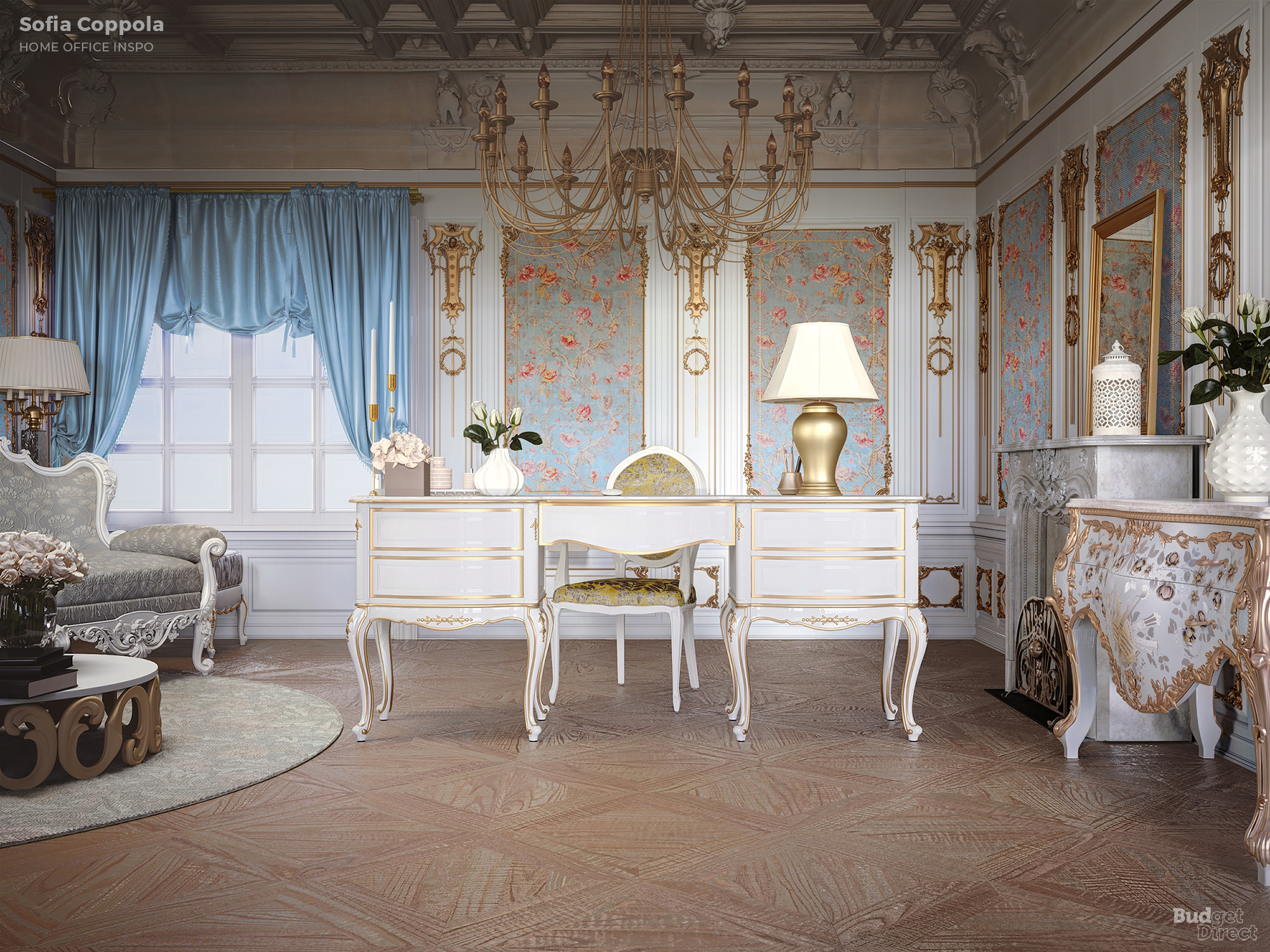
With working from home set to remain in place for at least another while and, perhaps, become a permanent feature for many, thoughts have turned to creating a work space to inspire and motivate you as you sip your morning coffee.
The pandemic meant that millions of people have been asked to work from home. But as the lockdown restrictions are slowly lifted in different countries, many companies have confirmed that they will continue to ask their team to work remotely.
What started as a response to the crisis has now transformed into the new normal for many employees around the globe. So now it’s the time to think about creating a workspace at home, instead of just winging it on the kitchen counter.
The team at Budget Direct Home Insurance has gone a little further than combing the catalogues for inspiration, turning instead to 7 very diverse film directors’ portfolios to come up with something extra special.

Sofia Coppola
The director of movies like ‘Lost In Translation’, ‘The Virgin Suicides’, ‘Marie Antoinette’ and ‘The Beguiled’, is well-known for her use of muted or pastel colours, natural light and low contrast. Picture-for-picture, Coppola has developed a soft focus vintage look with an eye for exquisite bling. A vintage dressing table desk, baroque curves and plenty of baby blue and gold define this office design.

Wes Anderson
The ultimate architectural filmmaker, Wes Anderson becomes more of a designer with every film he makes. His sets are characterised by symmetry and flat composition to present his characters in a world that is part stage and part expressionist dream world. This home office dials back The Royal Tenenbams era, combining organic colours and curated clutter with meticulously angled furniture.

The Wachowskis
Their flagship movie ‘The Matrix’ rocketed the Wachowskis to success in the late 1990s. Featuring a cyberpunk aesthetic, the style has become fun and iconic because, as it turns out, the internet age doesn’t look like that! This design represents the collapse of everything (perhaps not the sentiment you want in your working day!) using post-industrial fixtures and fittings, abandoned 80s furniture, and repurposed wood and signage. This makes a cool DIY project for the upcycler with an imagination.

Bong Joon-ho
Korean director Bong Joon-ho achieved international fame in 2019 when ‘Parasite’ became the first non-English-language film to win an Oscar. But cultured film-lovers were already familiar with his work, from the cool, satirical ‘Memories of Murder’ to the Kubrick-tinged sci-fi of ‘Snowpiercer’. Joon-ho’s diverse filmography has not prevented him from developing a consistent visual style. Glassy modernism with a hint of the wild is the way to go, with careful attention to light sources: large windows with natural light, glowing screens, and statement fittings. ‘Accidental’ geometry and textured surfaces add a touch of class.

David Lynch
Since ‘Blue Velvet’, David Lynch has shown how to make basic prime colours equally stylish and creepy – again, maybe not the room to host a Zoom call from! Consistently using black and white, he tends to pair them with deep reds and burgundy in surreal, dark scenes with low light. To get that extra-dimensional look, start with ‘Twin Peaks’ red room, add some 1950s Americana and record your voicemail greeting backwards.

Jean-Pierre Jeunet
Jean-Pierre Jeunet’s worlds aren’t always places you’d want to live and work. But his worlds are often as inventive as they are gloomy. With ‘Amélie’, Jeunet finally had homeowners reaching for the paint rollers. Amélie took the grim visual motifs that made Jeunet’s films stand out, made them lovely, and applied them to a Paris coated in sepia. To design your own Amélie-style home office, start with a strict Christmas tree colour scheme for the fixtures and fittings, and then trawl op shops, Etsy, and eBay to find objets d’art with a life of their own.

Pedro Almodovar
Almodovar’s 1988 breakthrough ‘Women on the Verge of a Nervous Breakdown’ showed off a pop-art type set with pastel colours, the director famously saying that if he’d had the money he’d have asked David Hockney to design it. Three decades on, his style retains the pop-art style but the look is swarthy and slick, raw and pushed to the excesses of sophistication. His philosophy is: if every element sticks out, no element sticks out. The unifying principle there is, of course, anything goes as long as it’s fabulous.


